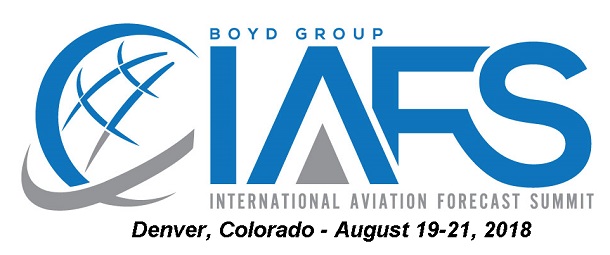Projection: Remainder of 2018.
Traffic Strong – But Airline Systems Are Changing
With the half year mark coming for 2018, it’s clear that traffic levels are tracking with airline capacity.
Boyd Group International’s Airports:USA® forecasts accomplished last year for 2018 indicated enplanement growth in the 4.8% to 5.3% range. As of today, it’s tracking at 5.1%.
That is consistent with the changes in airline system capacity filed for the fourth quarter of 2018. It should not be misconstrued as growth that’s even across the board… there are major changes in airline strategies that are becoming apparent.
Two Airline Systems. Two (Or More) Fundamental Business Models. Non-ULCC carriers are up 5.2% in capacity, while the parallel universe of ULCCs are up 8.3%. Combining the two systems (which is actually not all that meaningful) the nation is going to see 5.4% more seats than last year.
(Sun Country is not reflected here, as it is expected that it will see major route changes – and expansion – in the 4th quarter that are not yet reflected in filed schedules.)
This is hardly what one could call “over capacity.” To be sure, the followers of the first six chapters of the Econ 101 textbook will claim that if airlines just cut out seats, then yields will go up. That view – sometimes postured from supposed “experts” shows a near-zero understanding of the air transportation system.
Expansion Is Not The Same As Adding Capacity. What needs to be understood is that carriers such as United and American – where growth in departing seats is projected at around 7% – are not “adding capacity” – at least in the way that term is traditionally defined. Instead, they are expanding their route systems – going after new revenues, as well as shifting some flying back into mainline jets.
And regarding the latter point, we’ve pointed out that United is on the hunt for more A-319s, and there has been no concurrent retirement program of in-fleet single aisle airliners. Draw your own conclusions – like, some mainline expansion, plus bringing some contract flying back in house. Changes in route structure.
Torpedo On The Loose: Fuel. Clouds on horizon: fuel costs could again set in motion an accelerated retirement of 50-seat jets.
This could have more effects than just the loss of some small-community access. Keep in mind that contract carriers (what are still mislabeled as “regional airlines”) are now considered a major future source of pilots for mainline airline systems. Any substantial cut back in this sector could affect the future flow of pilot candidates.
If You’re Interested In Exploring The New Direction of Aviation, Join Us In Denver. It is important that airport planners have a clear understanding of the major shifts in the economics of air transportation that are evolving. That’s why the International Aviation Forecast Summit is the best investment airports can make in looking to the future.
The Airports:USA® Enplanement Forecast session is one that will cause a complete re-think of how to project air traffic.
Here’s a hint: virtually every one of the traditional econometric factors that once were the foundation of passenger demand forecasting have become completely unhinged from what will happen in the future. We will be covering the new metrics.
 Plus, we’ll be issuing our new White Paper, The New Paradigms in Air Transportation, which is a document that will outline the material changes in how airlines – and consumers – will shape travel patterns.
Plus, we’ll be issuing our new White Paper, The New Paradigms in Air Transportation, which is a document that will outline the material changes in how airlines – and consumers – will shape travel patterns.
Here’s another hint: take a look at recent major market moves by certain carriers. These were almost entirely driven by internal long-term planning and corporate strategies, not outside “studies” or jive “leakage analyses” inflicted on supposedly-mind numb airlines. There’s a futurist planning message here.
And these represent just one session and one Workshop at the IAFS™.
American Airlines To Participate. In addition to the CEOs, presidents and senior executives already announced, we are excited to welcome Mr. Kurt Stache, Senior VP-Marketing of American Airlines to the Summit line-up. We’ll be talking with him regarding how AA is visioning the future.
Discussions…Not Panels. As our regular attendees know, the International Aviation Forecast Summit is focused on exploring the future, not wallowing in past data. Our unscripted one-on-one “fireside chats” set a new standard for aviation events – one that no other can match.
Special registration rates are in effect through June 30, so click here and join real aviation leaders in Denver, August 19-21.
Also, if you can get in a day earlier, Boom Supersonic will be hosting a special reception for IAFS™ at their headquarters on the evening of August 18. They’ll be showing the mock up of the 0ne-third size “Baby Boom” proof of concept demonstrator that will fly next year. They’ll also illuminate some of the exciting points regarding the 55-seat Boom airliner. Don’t miss it.